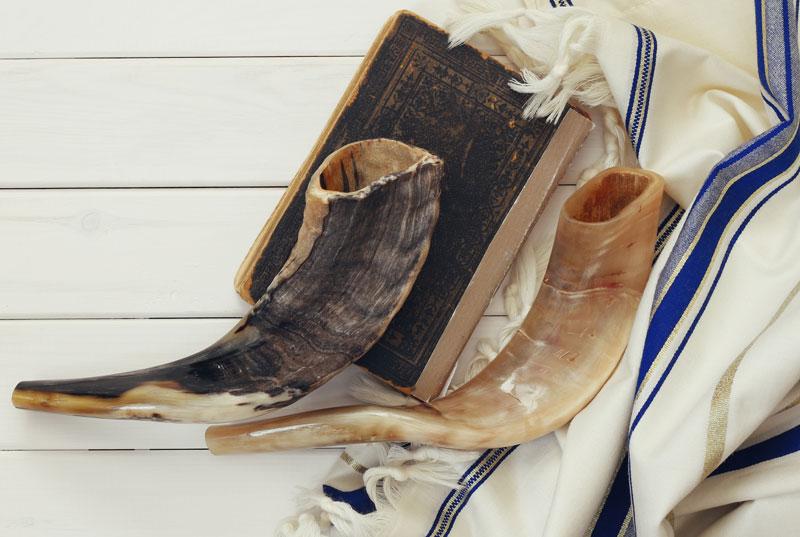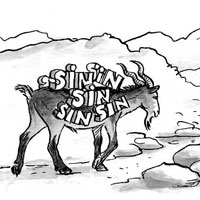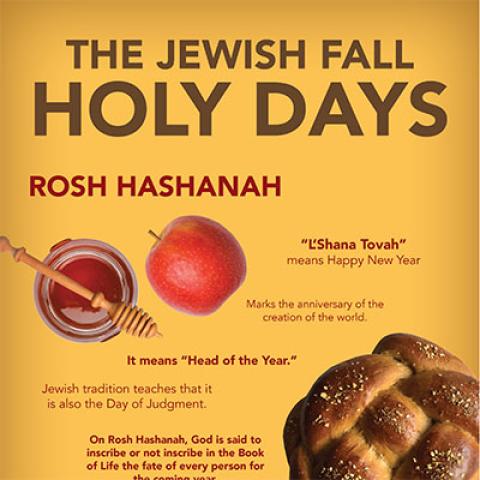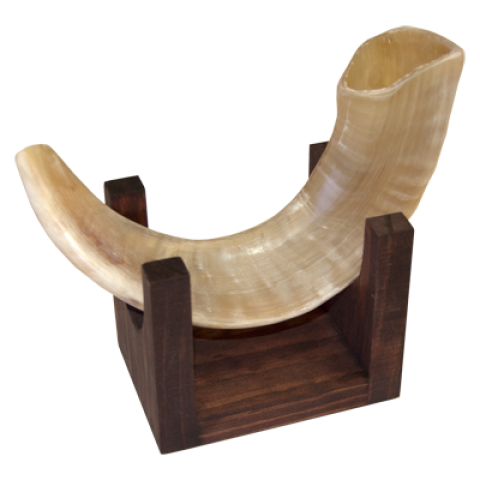
The holiest day of the Jewish year is Yom Kippur—a solemn time of acknowledging sins and seeking God’s forgiveness and mercy. In Hebrew, the word Yom means “day” and Kippur means “covering or atonement.”
Also known as the Day of Atonement, Yom Kippur was the one time of the year when the High Priest was allowed to enter the Most Holy Place of the Temple to atone for sin—his own as well as those of his family and the entire nation. Further, he was required to sacrifice both a bull and a goat and then sprinkle the blood of these animals on the Mercy Seat. Next, a scapegoat was brought to the leaders of Israel. They were to lay hands on the animal, symbolically placing the sins of the nation on it and then drive it into the wilderness, where it carried the nation’s sins.
Get the Fall Feasts Infographic
Discover the meaning and wonder of Rosh Hashanah, Yom Kippur, and Sukkot with this specially designed infographic.
Why two goats? The first one was to atone (pay) for the people’s sins. The second was to remove those sins from their presence. The blood of the first goat brought forgiveness. The second goat brought temporary cleansing and righteousness. As another year drew to its conclusion and the people reached another Day of Atonement, they once again needed a sacrifice as they were covered in the filth and grime of their sinful nature and desperately in need of another sacrifice.
Yom Kippur anticipates the day prophesied in Isaiah 59:20. Perhaps the greatest of all the ancient prophets, Isaiah expected the Yom Kippur to end all Yom Kippurs, when “the Redeemer will come to Zion, to those in Jacob who repent of their sins.” On that day, all of Israel’s sins will be forgiven for all time, and no further animal sacrifices will be required.
We who embrace New Covenant truth understand that Yeshua (Jesus) fulfills this requirement for blood atonement. He is the final sacrifice for us and there is no more need for blood atonement outside of His work of redemption. We need to understand that without Messiah, no one―the Jewish people included―have atonement for sin.
Get the Small Shofar and Stand
This small shofar is made of a ram’s horn and measures 8” to 12”. Colors, textures, and finish vary in these natural animal horns but all are beautiful and have been tested to be functional before shipping. Includes a beautifully crafted wooden stand to display your shofar.
I believe this day is nearly here. The people of Israel—and, in fact, the people of every nation, tribe and culture―will come face to face with the Lord Yeshua Himself. Jesus is our High Priest, the sacrifice for the atonement of our sins, and our scapegoat—all three in one.
“Christ did not enter a man-made sanctuary that was only a copy of the true one,” according to Hebrews 9:24, “He entered heaven itself, now to appear for us in God’s presence.” Verse 28 says Jesus did not have to make an annual sacrifice as the High Priest did with blood that is not his own. Instead, “Christ was sacrificed once to take away the sins of many people; and He will appear a second time, not to bear sin, but to bring salvation to those who are waiting for Him.”
Yeshua HaMashiach (Jesus the Messiah), will soon return to earth, bringing lasting peace and freedom from the effects of sin to all who have accepted His sacrifice.

Yom Kippur through the Eyes of Longing
We haven’t eaten anything. God commanded that we afflict our souls, so we fast. He also commanded a complete Sabbath, so, we don’t do any...





